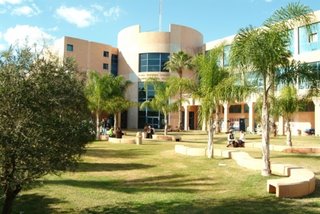
Introduction
Postmodern Paradigm Shift: From Hellenistic to Hebraic Consciousness
Hebraic consciousness is compared with Hellenistic consciousness through analysis of the Guggenheim Museums of the American architects Frank Lloyd Wright and Frank Gehry and the biblical design of the Tabernacle. The down-to-earth spirituality of Judaism is explored by engaging the Bible in a playful spirit that reveals its significance through multiple perspectives. Art derived from Jewish thought and experience combines pride in roots while reaching out globally to show how cultural differences shed light on basic human similarities. The creation of monumental works of environmental art through the intergenerational collaboration of the Jewish, Hispanic, and African-American communities in Miami exemplifies this postmodern sprit.
Frank Lloyd Wright’s Guggenheim Museum
Frank Gehry’s Guggenheim Museum
Hebraic Consciousness and Postmodernism
Deep Roots and Globalization
Down-to-Earth Spirituality
Multiple Perspectives
Talmud and the Internet
Engaging the Bible in a Playful Spirit
Intergenerational Collaboration in Polycultural Art
Chapter One
Semiotic Perspective: Redefining Art in a Digital Age
Semiotics, the theory of signs and how they create significance, provides a conceptual framework for redefining art in the postmodern era. It creates categories of representational and presentational art forms, from Hellenistic iconic representation to Hebraic dialogic presentation, from art representing the past to art that creates meaning in the present and future. The common media ecology of the Talmud and the Internet provides clues to the confluence between the deep structure of Jewish consciousness and the worldview emerging in the digital age.
From Representational to Presentational Art
Iconic Art: Resemblance
Symbolic Art: Consensus
Indexic Art: Documentation
Identic Art: Being
Prioric Art: Proposing
Dialogic Art: Interacting
Chapter Two
Morphological Perspective: Space-Time Structures of Visual Culture
Morphological hermeneutics is used as a method for studying civilizations as structures of consciousness. The comparison of space-time morphologies in mythological, logical, and ecological cultures traces how postmodernism developed art forms that mirror the structure of Jewish consciousness. It explores the origins of ecological perspective in art and science that can lead from deconstruction to reconstruction in postmodern theory and practice. Morphological analysis of Jewish visual culture focuses on the biblical injunction to break open the corners of a rectangular garment with four fringes (tzitzit) tied with knots, spirals, and branches. Two exemplary sets of conceptual and environmental artworks derived from this injunction are discussed.
Latent Structure and Transformative Processes
Alternative Perspectives
Mythological Perspective
Logical Perspective
Ecological Perspective
Origins of Ecological Perspective in Science
Origins of Ecological Perspective in Modern Art
From Deconstruction to Reconstruction
Biblical Fringes: Morphological Analysis of Visual Culture
Four Wings of America: Art as Visual Midrash
Sky Art: From Munich to the Tzin Wilderness
Chapter Three
Kabbalistic Perspective: Creative Process in Art and Science
Semiotic and morphological analyses are methodologies derived from a Hellenistic structure of consciousness. Since methodologies for studying art and culture are not neutral but are themselves cultural constructs, the chapters on kabbalistic and halakhic perspectives introduce alternative methodologies that are distinctively Jewish. These Jewish methodologies provide fresh viewpoints for understanding the significance of postmodern art forms in a digital era. In contrast to Hellenistic thought that manipulates abstract concepts, Hebraic thought uses imagery concepts drawn from of everyday life experiences, concepts that are concrete yet metaphorical. The kabbalistic perspective provides a symbolic language and conceptual schema for exploring two parallel creative processes – human and divine. The empirical data illuminating this model of creativity stems from my interviews of prominent artists and scientists and my own creative experiences as an artist.
Spiritual Bits and Bytes
Biblical Roots of Kabbalah
Ten Sephirot of Creative Process
Digitized Homage to Rembrandt
Cyberangels and AT&T
Creativity in Art and Science
Pathways to Beauty
Chapter Four
Halakhic Perspectives: Creating a Beautiful Life
The halakhic perspective moves beyond religion and science to create a methodology that draws spirituality down into our gross material world to beautify our lives. Creative process is highly prized in Jewish life only if it leads to relating to others with loving-kindness while continually renewing the old and sanctifying the new. The dangers of human creative endeavors leading to evil results are explored by relating the biblical accounts of the Tower of Babel and Sodom to Italian Futurist fascism and Islamist terrorism. Art as a learning process is exemplified by the LightsOROT exhibition created at MIT’s Center for Advanced Visual Studies in collaboration with Otto Piene to explore the spiritual dimensions of the electronic age. Art exploring halakhic values of beautifying our deeds and compassion is realized by responsive artwork that brings tactile sight to blind people through digital technologies.
Beyond Religion and Science
Lessons from 9/11: Choose Life not Death
Tower of Babel: Disastrous Creativity
Eruv at Sodom: Honoring Human Diversity
Beautifying Actions: Adding Light to the World
LightsOROT at MIT: Learning Torah Through Art
Responsive Art in a Digital Age








